 Understanding Rabbit Behavior: Are Rabbits Nocturnal?
Rabbits are often associated with being active during the day, which can lead many pet owners and enthusiasts to wonder about their nocturnal habits. While it's true that rabbits are generally crepuscular—meaning they are most active at dawn... ↪ Read more
Understanding Rabbit Behavior: Are Rabbits Nocturnal?
Rabbits are often associated with being active during the day, which can lead many pet owners and enthusiasts to wonder about their nocturnal habits. While it's true that rabbits are generally crepuscular—meaning they are most active at dawn... ↪ Read more Veterinary Drug Handbook (VDH) is the reference veterinarians turn to when they want an independent source of information on the drugs that are used in veterinary medicine today.
-
 Is veterinary Liniment Gel safe for humans?
Is veterinary Liniment Gel safe for humans? -
 Giving Your Cat A Pill
Giving Your Cat A Pill -
 Dog Aggression
Dog Aggression -
 Dogs May Help Boost Infant Health
Dogs May Help Boost Infant Health -
 Animal-Assisted Therapy, Veterinary Social Work, & Social Work With People & Pets in Crisis
Animal-Assisted Therapy, Veterinary Social Work, & Social Work With People & Pets in Crisis -
 On-demand veterinary service gives advice on poorly pets
On-demand veterinary service gives advice on poorly pets -
 Should we stop throwing sticks for dogs?
Should we stop throwing sticks for dogs? -
 Can breathing in cat hair be harmful?
Can breathing in cat hair be harmful? -
 What does PU/PD mean in veterinary medicine?
What does PU/PD mean in veterinary medicine? -
 Bill calls for ban on sales of dogs, cats in Maine pet stores
Bill calls for ban on sales of dogs, cats in Maine pet stores -
 Common Meanings Of Cat Behavior
Common Meanings Of Cat Behavior -
 What does DVM stand for in veterinary?
What does DVM stand for in veterinary? -
 Curing Bad Cat Breath
Curing Bad Cat Breath -
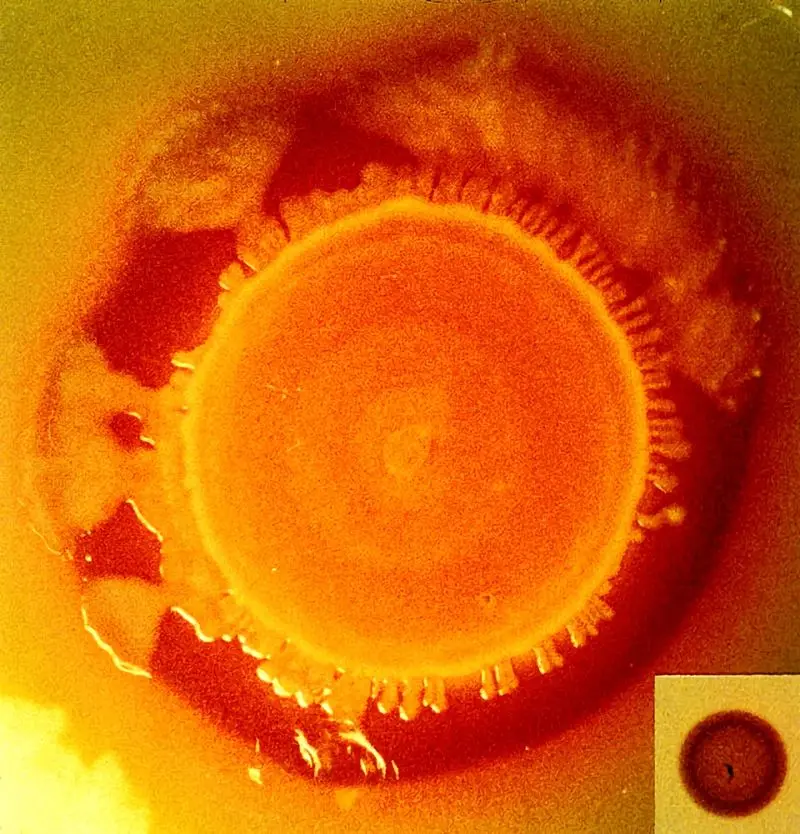 New Tracking Tool for Pathogen Investigators
New Tracking Tool for Pathogen Investigators -
Can binturongs be kept as pets?
-
 How long do instruments stay sterile after autoclaving veterinary?
How long do instruments stay sterile after autoclaving veterinary?
Are rabbits nocturnal?
 Understanding Rabbit Behavior: Are Rabbits Nocturnal?
Rabbits are often associated with being active during the day, which can lead many pet owners and enthusiasts to wonder about their nocturnal habits. While it's true that rabbits are generally crepuscular—meaning they are most active at dawn... ↪ Read more
Understanding Rabbit Behavior: Are Rabbits Nocturnal?
Rabbits are often associated with being active during the day, which can lead many pet owners and enthusiasts to wonder about their nocturnal habits. While it's true that rabbits are generally crepuscular—meaning they are most active at dawn... ↪ Read more How do cats purr?
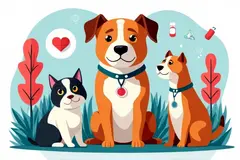 The Enigma of Cat Purring: Understanding the Mechanism
Cat purring is a fascinating and complex behavior that has intrigued veterinarians and animal enthusiasts alike. The exact reasons behind this soothing sound remain somewhat of a mystery, but several theories have emerged to explain its... ↪ Read more
The Enigma of Cat Purring: Understanding the Mechanism
Cat purring is a fascinating and complex behavior that has intrigued veterinarians and animal enthusiasts alike. The exact reasons behind this soothing sound remain somewhat of a mystery, but several theories have emerged to explain its... ↪ Read more Can vets treat dogs?
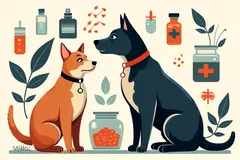 Can Veterinarians Treat All Types of Dog Illnesses?
Veterinarians are highly trained professionals equipped to diagnose and treat a wide range of canine health issues. Their expertise spans from routine vaccinations and wellness check-ups to complex surgeries and specialized treatments. However,... ↪ Read more
Can Veterinarians Treat All Types of Dog Illnesses?
Veterinarians are highly trained professionals equipped to diagnose and treat a wide range of canine health issues. Their expertise spans from routine vaccinations and wellness check-ups to complex surgeries and specialized treatments. However,... ↪ Read more Do fish need heaters?
 Heating Requirements for Fish
The necessity of a heater for fish depends on the species and their natural habitat. Tropical fish, such as guppies and bettas, typically thrive in warm water temperatures and often require heaters to maintain a stable environment. In contrast, coldwater fish like... ↪ Read more
Heating Requirements for Fish
The necessity of a heater for fish depends on the species and their natural habitat. Tropical fish, such as guppies and bettas, typically thrive in warm water temperatures and often require heaters to maintain a stable environment. In contrast, coldwater fish like... ↪ Read more Do cats need dental care?
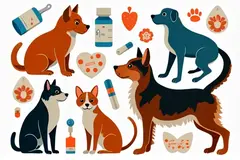 Importance of Dental Hygiene for Cats
Cats are prone to dental issues such as tartar buildup, gum disease, and tooth decay. Regular dental care is crucial in maintaining their overall health. One essential aspect of this care is brushing your cat's teeth.
Frequency of Tooth Brushing
The American... ↪ Read more
Importance of Dental Hygiene for Cats
Cats are prone to dental issues such as tartar buildup, gum disease, and tooth decay. Regular dental care is crucial in maintaining their overall health. One essential aspect of this care is brushing your cat's teeth.
Frequency of Tooth Brushing
The American... ↪ Read more Do all snakes hiss?
 Understanding Snake Behavior: What Does It Mean When a Snake Hisses at You?
A snake's hiss is a natural defensive mechanism used to deter predators or perceived threats. This vocalization is produced by air being forced through the snake's lungs and expelled rapidly, creating a distinctive hissing... ↪ Read more
Understanding Snake Behavior: What Does It Mean When a Snake Hisses at You?
A snake's hiss is a natural defensive mechanism used to deter predators or perceived threats. This vocalization is produced by air being forced through the snake's lungs and expelled rapidly, creating a distinctive hissing... ↪ Read more Do fish like music?
 The Impact of Music on Fish Behavior
Research into the effects of music on fish has revealed intriguing insights. Studies suggest that certain types of sound and music can influence fish behavior, including their swimming patterns, stress levels, and even breeding habits. For instance,... ↪ Read more
The Impact of Music on Fish Behavior
Research into the effects of music on fish has revealed intriguing insights. Studies suggest that certain types of sound and music can influence fish behavior, including their swimming patterns, stress levels, and even breeding habits. For instance,... ↪ Read more Do cats need nail trims?
 Frequency of Cat Nail Trimming
Cat nail care is an essential aspect of pet ownership that helps maintain your feline friend's hygiene and comfort. The frequency at which you should trim your cat's nails depends on several factors, including the breed, activity level, and individual grooming habits... ↪ Read more
Frequency of Cat Nail Trimming
Cat nail care is an essential aspect of pet ownership that helps maintain your feline friend's hygiene and comfort. The frequency at which you should trim your cat's nails depends on several factors, including the breed, activity level, and individual grooming habits... ↪ Read more Can dogs sense danger?
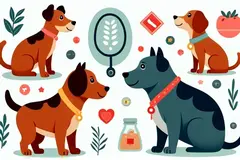 Can Dogs Smell Diseases in Humans?
Dogs are renowned for their acute sense of smell, which is up to 100 times more sensitive than that of a human. This exceptional olfactory ability has been harnessed in various applications, including detecting diseases in humans. Research indicates that dogs can... ↪ Read more
Can Dogs Smell Diseases in Humans?
Dogs are renowned for their acute sense of smell, which is up to 100 times more sensitive than that of a human. This exceptional olfactory ability has been harnessed in various applications, including detecting diseases in humans. Research indicates that dogs can... ↪ Read more Can snakes sense danger?
 Understanding Snakes' Hibernation Triggers
Snakes are ectothermic animals, meaning their body temperature is regulated by the environment. This characteristic plays a crucial role in determining when they enter into a state of dormancy known as hibernation. The process is primarily driven by... ↪ Read more
Understanding Snakes' Hibernation Triggers
Snakes are ectothermic animals, meaning their body temperature is regulated by the environment. This characteristic plays a crucial role in determining when they enter into a state of dormancy known as hibernation. The process is primarily driven by... ↪ Read more Can fish get depressed?
 Do Fish Experience Depression?
The concept of depression in fish is a topic of interest within the field of veterinary science. While it's challenging to definitively prove that fish can experience emotions similar to those in humans, recent research suggests that they may exhibit behaviors... ↪ Read more
Do Fish Experience Depression?
The concept of depression in fish is a topic of interest within the field of veterinary science. While it's challenging to definitively prove that fish can experience emotions similar to those in humans, recent research suggests that they may exhibit behaviors... ↪ Read more Can dogs eat ice cream?
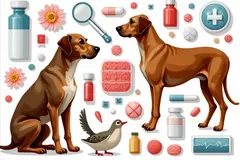 Can Dogs Safely Consume Ice Cream?
Dogs are known for their love of human treats, and ice cream is no exception. However, before indulging your furry friend in this frozen delight, it's important to consider the potential health implications.
While some dogs may enjoy a lick or two of ice cream... ↪ Read more
Can Dogs Safely Consume Ice Cream?
Dogs are known for their love of human treats, and ice cream is no exception. However, before indulging your furry friend in this frozen delight, it's important to consider the potential health implications.
While some dogs may enjoy a lick or two of ice cream... ↪ Read more Popular Diagnoses
Packed cell volume (PCV, hematocrit) Reflex ovulator Mucolytic Microfilaricide Bronchodilator Hematocrit Glucocorticoid Monoamine oxidase inhibitor (MAOI) ↪ All veterinary diagnoseOther Diagnoses
Anticholinergic Anticholinesterase Anticoagulation Anticonvulsant emetic antigen Antiprotozoal AntipruriticPopular Veterinary Clinics
VCA Welborn Animal Hospital, 7860 Washington Avenue Kansas City, KS 66112 USA MedVet Columbus, 300 East Wilson Bridge Road, Worthington, OH Rutland Veterinary Clinic & Surgical Center, 90 East Pittsford Road, Rutland, VT VCA Paradise Valley Emergency Animal Hospital, 6969 East Shea Boulevard Suite 150 Scottsdale, AZ 85254 USA Connecticut Veterinary Center & Pet ER, 470 Oakwood Ave West Hartford, CT 06110 USA Norway Veterinary Hospital, 10 Main St P.O. Box 273 Norway, ME 04268 USA Craig Road Animal Hospital, 5051 West Craig Road, Las Vegas, NV Abri Veterinary Hospital Inc, 1449 Trademart Boulevard Winston-Salem, NC 27127 USA ↪ All veterinary clinicsOther Veterinary Clinics
Park Lane Veterinary Hospital, 1525 24th Avenue, SW Norman, OK 73072 USA VCA Veterinary Medical Center, 3129 S Winston Ave Tulsa, OK 74135 USA Small Animal Clinic of Tulsa, 4820 E 33rd Street Tulsa, OK 74135 USA VCA Cat Hospital of Tulsa, 5122 South Sheridan Road Tulsa, OK 74145 USA The Cat Doctor, 4407 SW Corbett Ave Portland, OR 97239 USA Pet Samaritan Clinic, 2480 East Burnside Street, Portland VCA Laurelhurst Animal Hospital, 2945 NE Sandy Blvd., Portland Powell Veterinary Center, 3654 SE Powell Boulevard, PortlandPopular Drugs
DOXYLAMINE SUCCINATE Doses - PENICILLIN V POTASSIUM Doses - METHYLPREDNISOLONE, METHYLPREDNISOLONE ACETATE, METHYLPREDNISOLONE SODIUM SUCCINATE ACEPROMAZINE MALEATE Doses - PREDNISOLONE, PREDNISOLONE SODIUM SUCCINATE, PREDNISOLONE ACETATE, PREDNISONE Doses - FURAZOLIDONE Doses - FERROUS SULFATE Doses - LEVAMISOLE ↪ All veterinary drugOther Drugs
Novipet Joint Support PET-EMA ENEMA SA K-BroVet 250 K-BroVet 500 Proin PET ENEMA FELINE PET-EMAPopular Terms
Subalbinotic Steatis Uteroverdin Paradoxical CSF acidosis Figure of 8 suture pattern Nerve root signature Ovariohysterectomy Abrev OVH Signalment ↪ All veterinary termOther Terms
Days in milk Days open Dead-end host Debride Deciduous teeth Decubital ulcers Deep mycoses Defecationveterinary-help.com
© 2011-2025 Veterinary Clinics, Diagnoses, Terms and Drug Handbook Online

